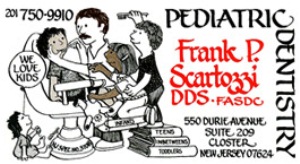
Dental Sealants
Understanding Dental Sealants
What's more, a child's newly erupted permanent teeth are not as resistant to decay as adult teeth are. The hard enamel coating that protects the teeth changes as it ages to become stronger. Fluoride, which is found in toothpaste and some drinking water — and in treatments we use here at the dental office — can strengthen enamel, but, again, it's hard to get fluoride into those pits and fissures on a regular basis. Fortunately, there is a good solution to this problem: dental sealants.
Dental sealants are invisible plastic resin coatings that smooth out the chewing surfaces of the back teeth, making them resistant to decay. A sealed tooth is far less likely to develop a cavity, require more expensive dental treatment later on, or, most importantly, cause your child pain.
A note about BPA: A 2012 study that received wide press coverage raised concerns that trace amounts of the chemical bisphenol-A (BPA) found in some (but not all) dental resins might contribute to behavioral problems in children. The study authors noted that while they had found an association, they had not actually proven that BPA in dental sealants causes these problems. In fact, BPA is far more prevalent in food and beverage packaging than in dental restorative materials. The American Academy of Pediatric Dentistry and the American Dental Association have since reaffirmed their support for the use of sealants. We would be happy to answer any questions you may have regarding this issue.
Taking Care of Sealants
Sealed teeth require the same conscientious dental hygiene as unsealed teeth. Your child should continue to brush and floss his or her teeth daily and visit us for regular professional cleanings. This will give us a chance to check for wear and tear on the sealants, which should last for up to 10 years. During this time, your child will benefit from a preventive treatment proven to reduce decay by more than 70 percent.
